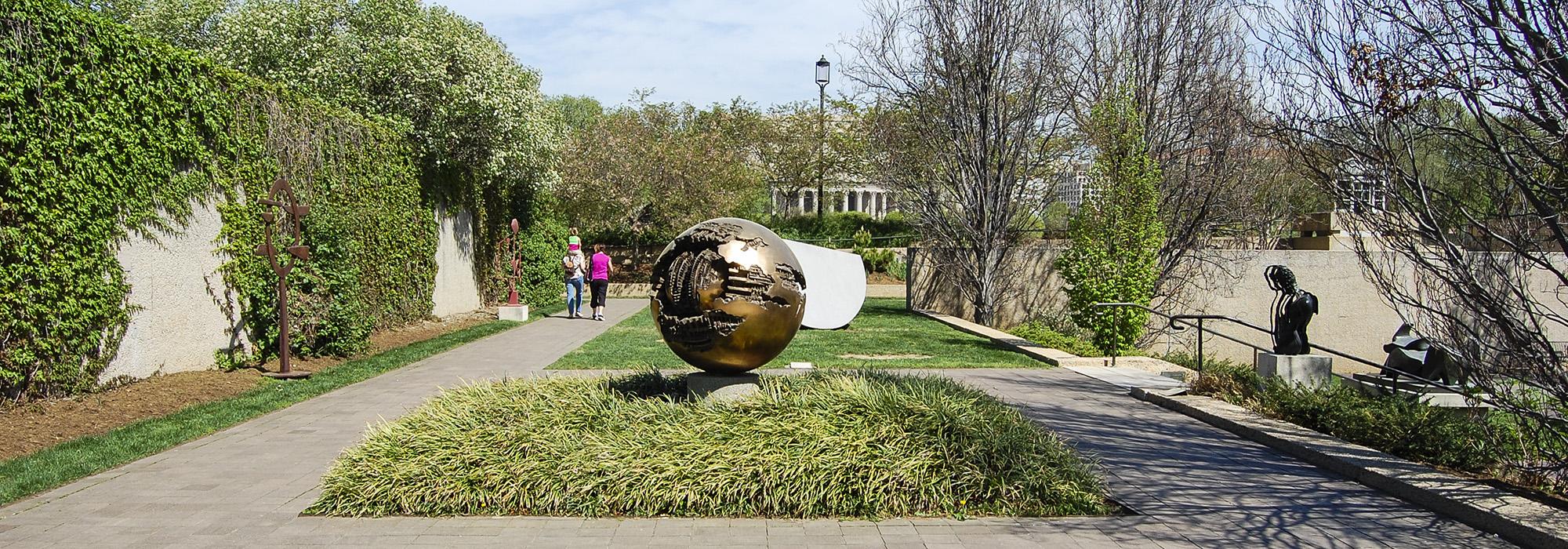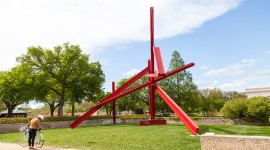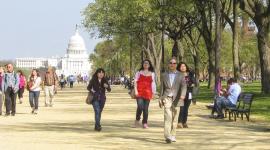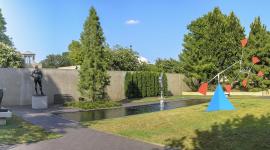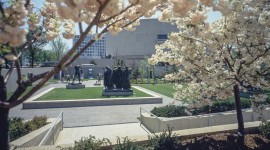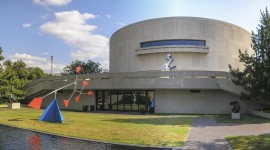Have Hirshhorn Representatives Appropriated “Build the Wall”?
Editor’s note: As we go to press, the Hirshhorn has emailed official consulting parties this morning with the announcement that: “The Smithsonian will move the Sculpture Garden Revitalization project forward using the “Revised Alternative” reflecting pool design and use of stacked stone at the reconstructed inner partition wall.”
It would appear that while the Hirshhorn has acknowledged some of the concerns raised by officials parties at the March 10, 2021 meeting, it has chosen to ignore those concerns along with others raised over the past two years.
As recompense for these negative impacts, the Hirshhorn will undertake minimization and mitigation measures including:
- Book publication on the history of the Hirshhorn Museum and Sculpture Garden
- Smithsonian Gardens Plant Explorer Webpage – Cultural reference information added to accessioned plants in the Sculpture Garden
- Public symposium on sculpture gardens
- Sculpture Garden site tours
- Smithsonian Gardens Lectures/Panel discussions
- Permanent Sculpture Garden Revitalization webpage
- Public outreach
The full list of minimization and mitigation measures are included in the Smithsonian’s announcement, but the bottom line is they plan to do what they want to do. They may choose to ignore official consulting parties, but they will still need to get approvals from the National Capital Planning Commission and the U.S. Commission of Fine Arts.
During a March 10, 2021 Section 106 meeting the Hirshhorn presented a new Sculpture Garden revitalization proposal that would now retain the original dimensions of the rectangular reflecting pool, a key element of the original design by architect Gordon Bunshaft and retained in the subsequent revision by landscape architect Lester Collins. However, officials renewed their push for elements of the Hiroshi Sugimoto-led redesign - called the "Revised Alternative" - that would replace a flexible use lawn panel with a second U-shaped pool (with terraced seating when drained), a new expanse of hardscape contiguous with the existing rectangular pool. This coupled with the insertion of stacked stone walls (a prototype of which is currently under construction-see below) will negatively impact the National Register-eligible site. The case has yet to be made for why these additions (and the material selections) are essential to fulfilling the museum’s mission.
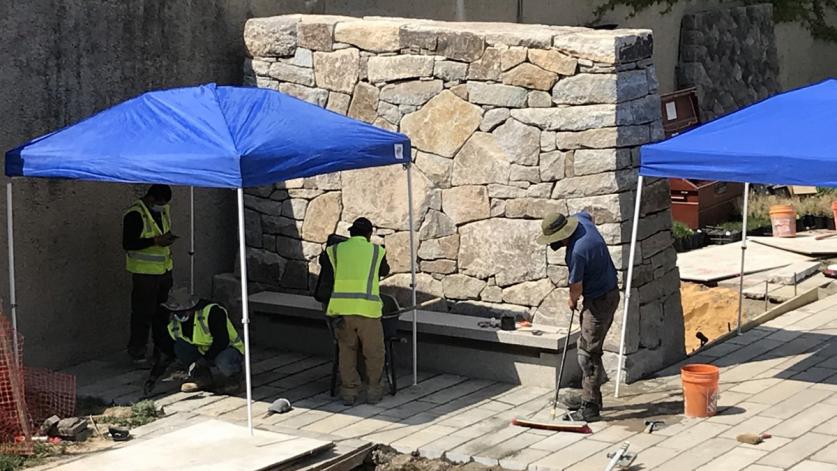
At the March 10 consulting parties meeting, Hirshhorn associate curator Marina Isgro said of the second pool and it’s terraced seating: “The big advantage, from a performance point of view, is the terraced seating allowed by the new southern portion … [which] kind of allows us to create a really intimate gathering space that can’t necessarily be achieved by rows of chairs.” While the deficiency of “rows of chairs” was not explored or otherwise explained, is the Hirshhorn really advocating for such an invasive and radical intervention for additional seating? Is this the only possible design solution?
In addition according to the Hirshhorn: “The [original] reflecting pool, once a central element in the rigorous composition of the Sculpture Garden is now overwhelmed by the complex landscape and scale of contemporary art. It offers the potential to again be a focal point for the Sculpture Garden, a place of gathering and inspiration.”
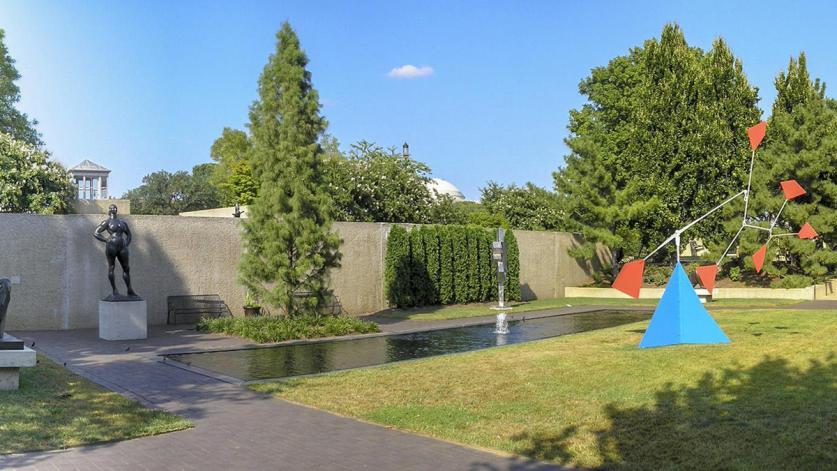
Leaving aside how the pool is currently “overwhelmed by the complex landscape and scale of contemporary art” (one of many unsubstantiated declarations along with “The existing Garden is both uninspiring to performance artists and inhospitable to our broader public as a welcoming civic gathering space”), the addition of the second pool means the Hirshhorn will fail to make the existing pool “a focal point for the Sculpture Garden” – the new focal point would be the 17’8” x 17’8” square performance stage. The existing pool would become part of a framing device, not a focal point. The visual and spatial relationship between the original rectangular pool and the rectangular window on the museum building is lost. The dominant geometric form in the central gallery would no longer the rectangular pool; the dominant form, which is evident from the Hirshhorn’s renderings, would now be the square performance stage. This is a fundamental and radical change of the basic geometries that define the sunken Sculpture Garden and its relationship to the Museum Building.
As for the stacked stone walls, Hirshhorn officials have also been trying to justify their insertion with numerous and ultimately unpersuasive arguments (for example, Joseph Hirshorn had stacked stone walls at his French Normandy-style estate in Connecticut, there are other stacked stone walls on the National Mall and, this rationale from museum director Melissa Chiu, Sugimoto has “been doing these stone walls in a number of different architectural projects, especially in Japan … they're like his curatorial intervention” – all three are absolutely irrelevant). It appears the real reason may be, as the Art Newspaper first reported, that Sugimoto has threatened to resign from the project unless he gets his stacked stone walls. When confronted about this, Hirshhorn officials did not deny it.
At the meeting Hirshhorn officials unveiled a new reason for using stacked stone walls: they improve acoustics. For the first time since the inaugural Section 106 presentation in April 2019, the Hirshhorn avers that the stacked stone walls are necessary to obviate the anomalous acoustics associated with the current aggregate concrete walls. Their consulting architect Felix Ade stated: “Our studies have found that the new shape of the wall will improve the acoustics by 90% and over what currently would exist with the current wall.” According to the acousticians we consulted this statement provides absolutely no indication of what’s being measured, let alone any benchmarks for analysis, and the justifications presented in the Hirshhorn’s materials are overly broad and thin on specifics. TCLF asked for the studies cited by Ade to be made public. In response, the Hirshhorn posted a summary of an acoustical “analysis that was completed as part of schematic design in Fall 2019.” The “acoustical observations” by the Norwalk, CT-based firm Akustiks discuss the ability of stacked stone walls to better offset “acoustical reflections” that could be perceived by listeners as being “harsh.”
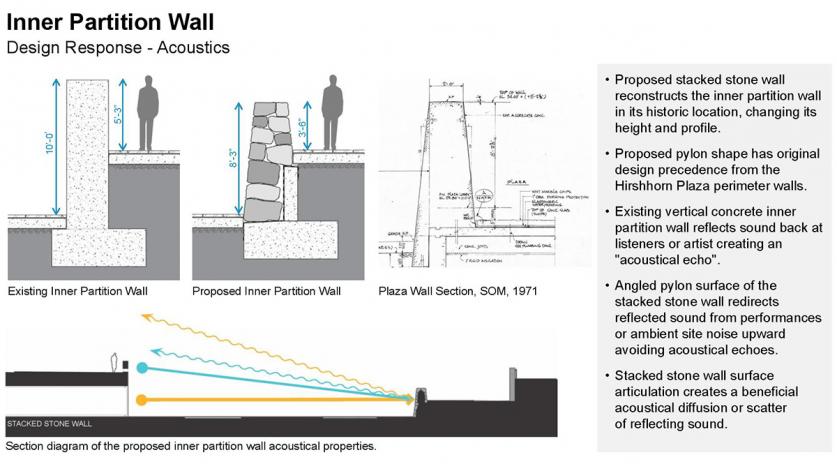
While the analysis by Akustiks is not inaccurate, it is fundamentally inadequate. And it does not alter TCLF’s comments submitted in response to the Section 106 meeting held on March 10:
“First, the Hirshhorn provides no differentiation between the acoustical requirements of different types of performances, performance art and other events and how each type would be affected, rather they are all indiscriminately lumped together. We have been advised that its naïve to say that one surface needs to change when, in fact, every surface needs to be examined. There are other factors, too: the sophistication of the sound systems; the skills of the sound technicians; the ability to focus sound in specific directions; the space between the inner partition wall and the performance stage (better sound quality would result from having the stage immediately in front of the wall, which is not possible here because of the presence of the reflecting pool); etc. Additional surfaces to be considered include the faces of the stairs and the drained new pool, among others; each has surface areas that potentially create acoustical anomalies. This raises at least two related questions. How many variables are there that could be controlled other than changing the inner partition wall’s design? How do we get around this newly identified problem without making material changes that fundamentally alter this work of art?”
It should be noted that the D.C. Historic Preservation Office (D.C. HPO), Docomomo U.S., the Committee of 100 on the Federal City and other official consulting parties join with The Cultural Landscape Foundation in questioning the purported need for the second pool and the stacked stone walls. Andrew Lewis with the D.C. HPO wrote: “we share the concerns raised by some consulting parties that the second pool will detract from the importance and simplicity of the original design.” Lewis also wrote: “[W]e also echo many of the other comments made by consulting parties regarding the integral nature of aggregate concrete walls to Bunshaft’s design and we continue to urge the Smithsonian to replace the central partition wall in-kind to help further minimize adverse effects on this important Modernist landscape.”
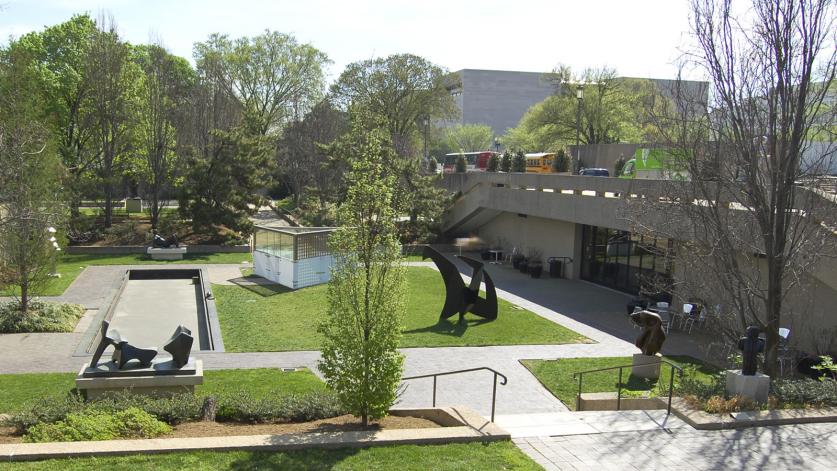
Meanwhile, Todd Grover and Liz Waytkus with Docomomo U.S. wrote that their organization “does not find the new acoustics arguments or the stacked stone wall precedents along the National Mall to be a compelling argument to change the shape or material of the inner partition wall. The material selection for this site must draw from the historic materials used, not impose a new material because an adjacent site or a specific trademark design element is the lexicon of a designer.” In a recent Wall Street Journal review, Michael Lewis wrote that the original concrete aggregate wall surface “forms an ideal setting for looking at sculpture outdoors, a neutral background against which the sculpture practically pops forward.” By contrast, the “agitated surfaces” of the stacked stone walls “clash with the lines of any sculpture displayed before it.”
The Committee of 100’s Kirby Vining relayed his organization’s opposition to the new pool: “As proposed, the addition of a new, multi-purpose reflecting pool/ performance space in the Central Gallery, effectively obliterates or inappropriately sublimates the original, historic 1974 Reflecting Pool. The new construction would destroy not only the historic design relationship between the existing Pool and the Central Gallery space but also the important visual relationship between the 1974 Pool and the large, north facing window/ balcony on the museum drum itself.” Concerning the stacked stone walls, he wrote: “While doubtless impressive and compelling, Mr. Sugimoto’s signature stone walls are simply the wrong material choice for this highly-significant, mid-century, Brutalist landscape.”
During the March 10 meeting Hirshhorn associate curator Anne Reeve said of the Sculpture Garden revitalization: “It’s important to emphasize that this is foremost a mission driven undertaking.” Hirshhorn officials say they need a defined area for performance art, exhibitions and other events. That’s fine. In reality, they are creating not one but two spaces for this purpose: the West Gallery, which would accommodate up to 400 seated participants; and, the Central Gallery, site of the original pool.
That’s two designated spaces.
At this point the Hirshhorn’s leadership should be asked: Will the museum be unable to fulfill its mission if the second pool and stacked stones walls are not inserted in the Sculpture Garden? If yes, they’ve not made their case. If no, then they appear to be caving to Mr. Sugimoto’s threats and that’s an insufficient justification for altering the Sculpture Garden, which is part of the National Mall Historic District and eligible for listing in the National Register of Historic Places.



